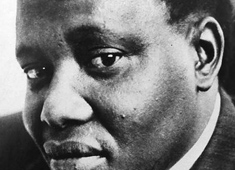Ongeziwe Babane and Phindile Xaba
What came to be known as Black Wednesday – October 19, 1977 – has left an indelible blemish on the history of the National Party’s (NP’s) rule and its suppression of freedom of expression.
On this bleak day, then apartheid state minister Jimmy Kruger clamped down on the media leading to the closure of The World and Sunday World, and the Christian Institute’s publication Pro Veritate that was edited by anti-apartheid activist and Dutch Reformed Church clergyman Beyers Naudé. Percy Qoboza, who was at the time editor of both The World and Sunday World, was frog-marched off to detention under Section 10 of the Internal Security Act.
Veteran journalist, Mathatha Tsedu, who suffered the NP’s wrath, along with other writers such as Don Mattera and Joe Tlholoe, were detained, tortured and even slapped with five-year banning orders. Last year in 2020, Tsedu put his experiences on record at the Azanian People’s Organisation seminar that focused on the events. In a paper entitled, The real meaning of Black Wednesday – October 19, 1977, he said that he, along with his colleagues, members of Media Workers Association of SA (MWASA) leadership – Zwelakhe Sisulu, Thloloe, Charles Ngqakula, Mono Badela, Subrey Govender, Phil Mthimkhulu – were banned for organising journalists into a unitary voice of challenging the apartheid rule.
He asserts that these efforts by the apartheid regime did not dim the highly organised black journalists’ efforts.
Activist Malesela Steve Lebelo explains the events that led to the clamp down of NP’s attempt at squashing all freedoms, from a unique point of view giving credit to the media’s role in exposing the atrocities of the apartheid regime and fuelling its global condemnation. He wrote in Black Wednesday was not an attack on the media (October 18, 2020) published in the City Press, that what precipitated Black Wednesday was the NP “regime’s failure to contain the insurrection that erupted in Soweto in June 1976, heightening white society’s fears over a looming ‘swart gevaar’ [black danger] thus prompting “the apartheid government to ban publications and organisations such as the Black Consciousness Movement (BCM) and its 18 affiliates.”
Tsedu explains that Black Wednesday was a culmination of all converged efforts including organised black journalists’ which could not be thwarted by the apartheid regime’s tactics: “However, the revolution was not going to be dimmed, just as the Union of Black Journalists was banned, Writers Association of South Africa (WASA) came into being and later became MWASA,” he writes in his paper.
He then points out that journalists such as Nat Serache who had been detained in April 1977, and had been subjected to 11 days of torture, went into exile when released. Thenjiwe Mtintso, who had worked with Steve Biko and Mamphela Ramphele in the BCM, at the time was a journalist at the Daily Dispatch, after being seconded by Biko to Donald Woods. She had also been detained (along with Biko) and tortured in the earlier parts of 1977, and she too fled the country once released to join Africa National Congress’ underground military arm – Umkhonto We Sizwe.
It was a different time. Black Wednesday will not be erased from the collective consciousness of South Africans and particularly the journalist community. Today it has become the country’s official Media Freedom Day and will always serve as an opportunity for reflection on how it is important to safeguard freedom of expression.










